Delving into the captivating world of the Kentucky Saddler horse, we embark on a journey to understand the various aspects of this exceptional breed that has captivated the hearts of equestrians for centuries. Known for its grace, elegance, and versatility, the Kentucky Saddler horse boasts a significant role in American history and the modern horse industry. From exploring its fascinating origins to comprehending the breed’s unique characteristics, this essay offers a comprehensive examination of the Kentucky Saddler horse and its substantial impact on equine enthusiasts and hobbyists alike.
Table of Contents (Horspedia)
History and Background of the Kentucky Saddler Horse
The story of the Kentucky Saddler horse begins in the late 18th century in the United States, when thoroughbred, Narragansett Pacer and Morgan bloodlines were being crossbred. This resulted in the development of a horse with a naturally smooth and comfortable gait, which became the foundation for the American Saddlebred.
The breed was initially known as the Kentucky Saddler, named after the region in which it was primarily bred and developed, and later its name was changed to the American Saddlebred to represent the entire country.
Throughout the 19th century, the breed’s popularity grew, especially in the southern states, where its smooth gait and comfortable ride made it the mount of choice for plantation owners and their workforce. The Kentucky Saddler was known for its versatility and could perform different gaits with ease, primarily the walk, trot, canter, slow gait, and the flashy, high-stepping “rack.”
The breed gained national recognition when it was used extensively by both the Confederacy and the Union during the Civil War, as its endurance and comfortable ride were highly valued by soldiers.
The American Saddlebred gained further prominence in the early 20th century, as its distinctive high-stepping action caught the eye of show ring enthusiasts, and the breed became synonymous with style, elegance, and performance. The breed’s versatility allowed it to excel not only in saddle seat competitions, but also in driving events and even show jumping.
Today, the American Saddlebred remains a popular choice in many equestrian disciplines.
Besides their distinctive gaits, Kentucky Saddler horses are also known for their refined and elegant appearance. They have an arched neck, strong and sloping shoulders, and a level croup that is essential for their high-action gaits. Their heads are expressive and intelligent, with large, dark eyes set wide apart. Most commonly found in chestnut, bay, and black, the breed can also be found in palomino, gray, and other colors, ensuring a wide variety of coat colors in the breed.
The Kentucky Saddler, also known as the American Saddlebred, has made a significant impact on the American horse industry with its distinctive gaits and elegant appearance. Valued in the show ring and across numerous disciplines, this breed’s smooth and comfortable ride has endeared it to riders nationwide, making it one of the most popular horse breeds in the United States.
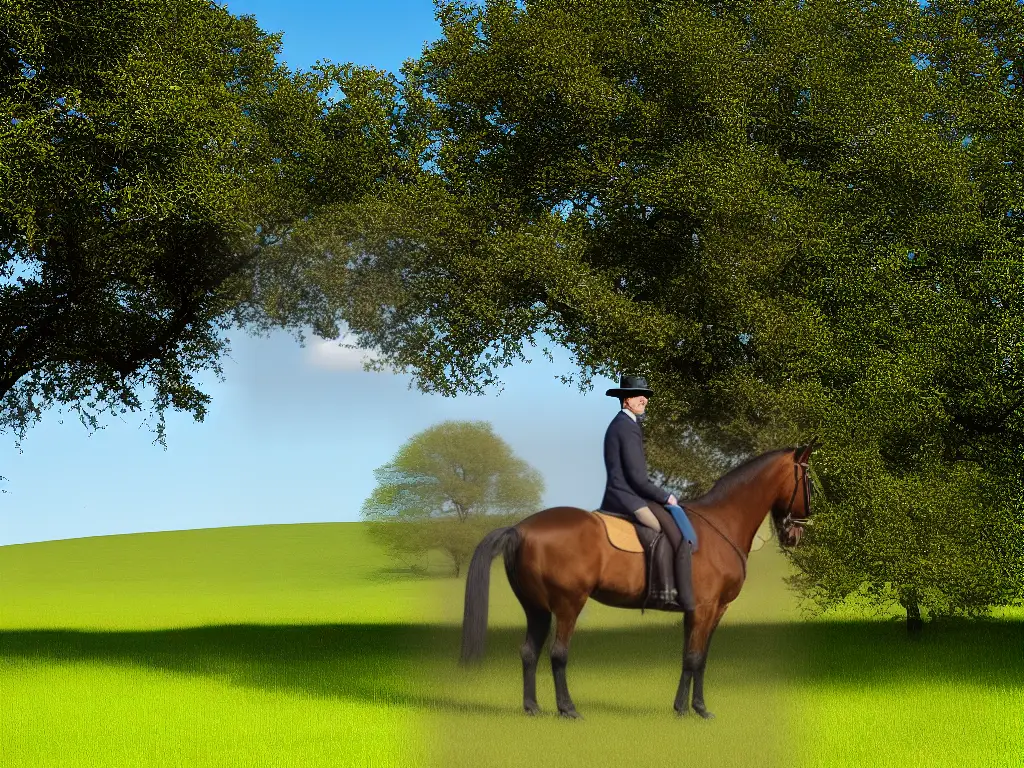
Anatomy and Conformation
With a rich historical background and continued success in various equestrian sports, the Kentucky Saddler horse’s legacy remains an essential part of America’s equine heritage. This unique and highly adaptable breed is particularly prized for its grace, agility, and showmanship. The Kentucky Saddler’s defining features include a long, arched neck, level back, and sloping shoulders, which contribute to its exceptional performance abilities. This makes the breed suitable for a wide range of applications, such as dressage, show jumping, and driving.
The musculature of the Kentucky Saddler horse is another factor that contributes to its performance abilities. Its long, muscular legs are strong yet flexible, allowing for an impressive range of motion during various gaits and activities. Furthermore, the breed is known to possess a well-developed hindquarters, which provides them with the necessary power and impulsion to perform their signature high-stepping gait.
Size is also an essential aspect of the breed’s anatomy. The Kentucky Saddler horse typically stands between 15 and 17 hands tall, which is a moderate height that falls within the range of most sport horses. This size not only makes the breed adaptable to many disciplines but also contributes to its elegant appearance. The breed’s size, when combined with its refined musculature, creates a well-rounded horse that can excel in many different settings.
In terms of conformation, the breed’s structure has been consistently refined over generations to produce a horse that is both elegant and athletic. The desired conformation for a Kentucky Saddler horse includes a balanced head with large, expressive eyes, a medium length back, and a long, sloping croup. The horse’s limbs should be straight and sturdy, with well-defined joints and a smooth, flowing walk. This distinctive conformation not only sets the breed apart visually but also impacts their remarkable gait and overall performance in the show ring.
The Kentucky Saddler horse, known for its elegance, agility, and strength, is a versatile and highly sought-after breed. Its conformation and anatomy directly influence its performance abilities in various equine activities such as saddle seat competitions and casual riding. Enthusiasts and hobbyists can better appreciate the Kentucky Saddler’s unique features by understanding the role its anatomy plays in its outstanding presence and performance.
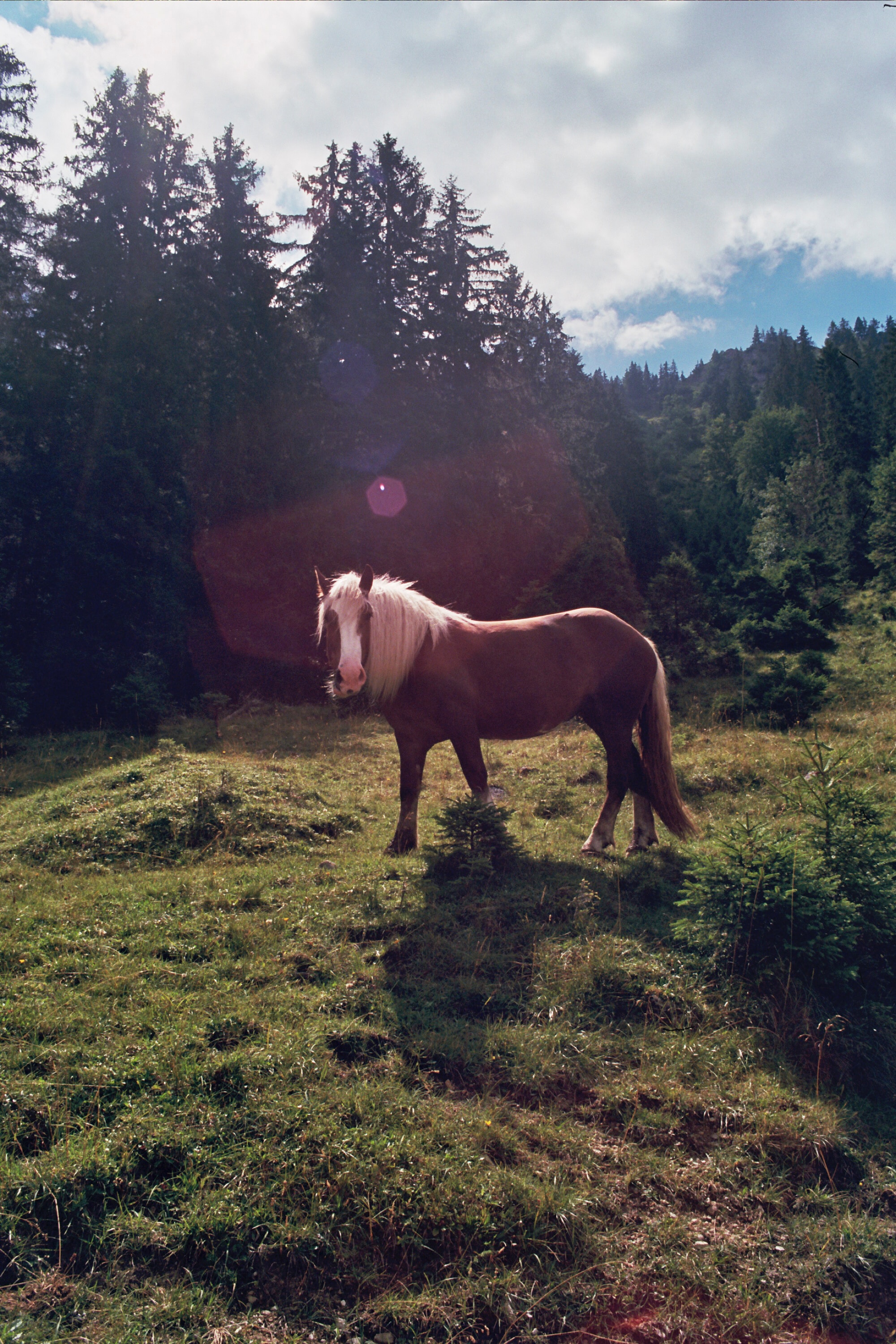
Photo by markusspiske on Unsplash
Gait and Movement
One way to truly appreciate the unique qualities of the Kentucky Saddler horse is by being familiar with its signature gaits, such as the rack and the running walk. The rack, also known as the single-foot or paso largo, is a smooth, four-beat gait that is both faster and more balanced than a traditional trot. On the other hand, the running walk, which is similar to a flat walk, is a forward-moving, four-beat gait, characterized by its overstride, where the hind foot steps beyond the front foot’s imprint.
Both gaits contribute significantly to the smooth ride and flashy appearance of the Kentucky Saddler horse. Historically, these comfortable gaits have been valued for long rides, making the breed an attractive choice for horse enthusiasts and hobbyists seeking versatility and style.
In understanding the mechanics of the Kentucky Saddler horse’s movement, the coordination and synchronization of its limbs play a crucial role.
During the rack, each of the horse’s four legs moves independently, providing even weight distribution and resulting in less jarring movement. This also allows for better suspension, providing a comfortable and effortless glide-like motion.
The running walk is characterized by the horse lifting its front legs higher than usual, creating a "flick" of the front feet right before landing, referring to the exaggerated overstride.
To become skilled in working with Kentucky Saddler horses or in riding these horses, one must learn how to recognize these gaits and understand how to cue them.
Riders can do this by focusing on maintaining a balanced seat, using gentle but precise rein and leg cues, and remaining in tune with the horse’s rhythm and movement.
The nuances of these cues can vary depending on the individual horse and rider, as well as on the horse’s breed and the rider’s skill level. Practice and collaboration with a knowledgeable trainer are important in achieving proficiency in these aspects of riding.
The distinctive gaits of the Kentucky Saddler horse make them ideal for a variety of disciplines and activities, ranging from leisurely trail rides to high-stakes competitions.
In the show ring, the impressive and flashy movement of the Kentucky Saddler, specifically during the rack or running walk, catches the eye of judges and spectators alike.
This breed’s versatility guarantees its suitability for various equine events, such as endurance rides, pleasure riding, and even dressage or jumping, highlighting the adaptability of their signature motion.
Understanding the biomechanics and biomechanical communication of the Kentucky Saddler horse, also known as the American Saddlebred, is essential in differentiating between its various gaits and in achieving a harmonious partnership between horse and rider.
Achieving balance maximizes the horse’s potential while maintaining its exceptional gait and movement, providing a solid foundation for enthusiasts looking to become skilled in working with this iconic breed both on the ground and in the saddle.

Temperament and Behavior
Known for their elegant appearance, smooth gaits, and distinctively high-stepping action, the Kentucky Saddler horse has become widely treasured by riders of diverse levels and disciplines.
Moreover, the breed’s desirable temperament and behavior complement their striking physical features, showcasing the Kentucky Saddler horse as an exemplary partner not only in terms of aesthetics but also in performance and collaboration with its rider.
One of the most prominent characteristics of the Kentucky Saddler is their spirited but willing nature. These horses are often described as having a “peppy” or charismatic temperament, with a natural enthusiasm for work and a willingness to please their handlers.
This combination of energy and good disposition makes them both engaging and enjoyable to work with, ensuring a positive experience for both horse and rider. Additionally, their responsiveness to training and their ability to build strong connections with their riders make them excellent partners for a range of equestrian activities.
In terms of social behavior, the Kentucky Saddler horse is often friendly, amiable, and enjoys the companionship of both humans and other horses. They typically display a level-headedness around other horses in group settings, making them an ideal choice for pleasure riding, trail riding, and competitive events where they might need to interact with other animals.
Their gentle and easygoing nature can also endear them to novice riders or those looking for a reliable companion in their equestrian pursuits.
Adaptability is another key attribute of the Kentucky Saddler horse’s temperament. These horses are highly versatile, which allows them to excel in various disciplines, from pleasure and trail riding to showing in events such as saddle seat, dressage, and even jumping.
Their prestigious ancestry and carefully cultivated bloodlines have endowed them with the physical and mental endurance to perform in various settings, making the Kentucky Saddler a popular choice among riders seeking a horse with the ability to adapt to their individual needs and requirements.
The intelligence and intuitive nature of the Kentucky Saddler horse cannot be emphasized enough. These horses are quick learners, which makes teaching them new tasks and addressing behavioral issues relatively simple for experienced equestrians. Their innate ability to adjust and adapt to their environment, along with their inherent charisma and gracefulness, contribute to making the Kentucky Saddler a highly sought-after breed by riders of all skill levels and across various disciplines.
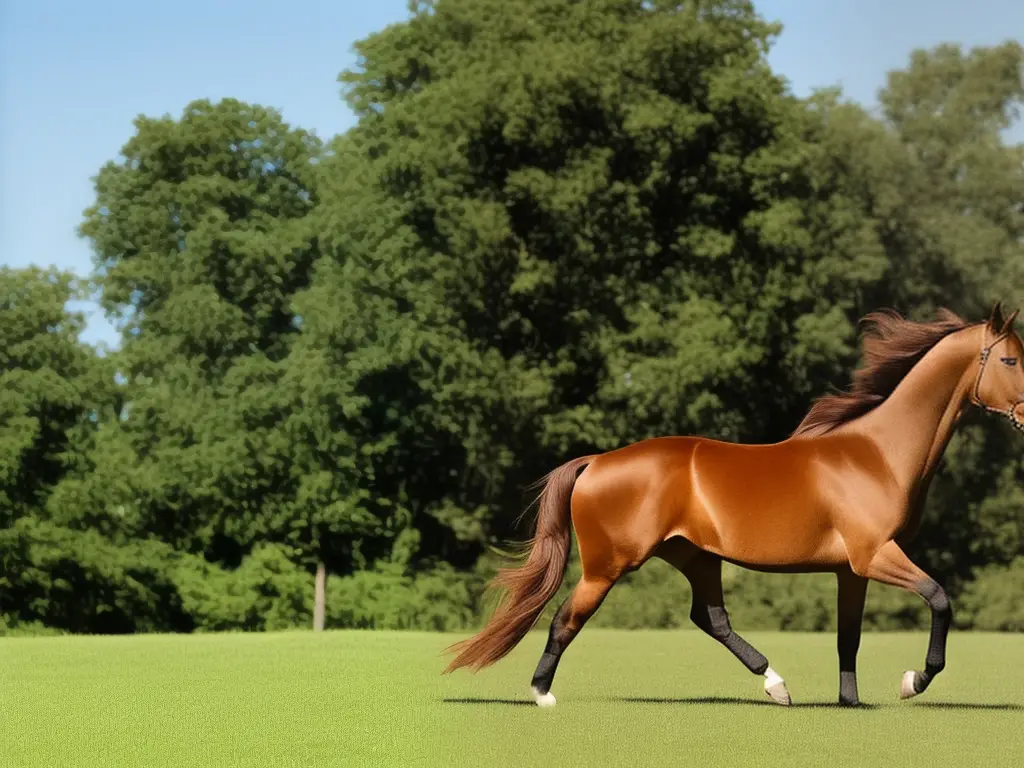
Care and Management
To ensure the well-being of a Kentucky Saddler horse, both physically and emotionally, it is crucial to provide dedicated care and attention. One important aspect of this care is maintaining a daily grooming routine. Brushing your horse daily is essential for keeping their coat in good condition, as it helps to remove accumulated dirt and sweat. Grooming also offers an excellent opportunity to bond with your horse and to identify any potential health issues, such as cuts or swelling, that may be concealed beneath their coat.Feeding your Kentucky Saddler adequately is another key aspect of their care and management. Providing high-quality hay or pasture, along with supplemental grain, will ensure they receive the necessary nutrients for optimal performance. It is important to tailor their diet based on their age, workload, and specific needs, consulting with a veterinarian or equine nutritionist if needed. Additionally, clean and fresh water should be readily available for your horse at all times.Healthcare is essential in maintaining the well-being of your Kentucky Saddler horse. Regularly scheduled visits by an equine veterinarian to perform wellness exams can help detect and manage potential issues that could affect your horse’s performance and overall health. Vaccinations to protect against common equine diseases, as well as deworming and dental care, should be part of the preventive healthcare routine.Another component of caring for your Kentucky Saddler is providing them with a comfortable and secure living environment. This includes a clean and well-ventilated stable or shelter, with dry bedding to prevent issues like thrush and protect them from extreme weather. If possible, allow your horse regular turnout time in a safe, enclosed pasture or paddock so they can exercise, graze, and interact with other horses. Socialization is essential for their emotional well-being, helping to reduce stress and promote a more relaxed demeanor.Training and exercise are essential components for the wellbeing of your Kentucky Saddler horse. As an enthusiast or hobbyist, focusing on these areas will help keep your horse in tip-top physical condition and provide necessary mental stimulation. Kentucky Saddlers are known for their comfortable natural gait and smooth ride, making them great contenders for various equine disciplines or leisure riding. Providing regular exercise helps maintain your horse’s shape, muscle tone, and overall performance. Moreover, fostering trust and consistency in your training routine will yield a well-behaved and responsive horse, while strengthening the bond between you both.
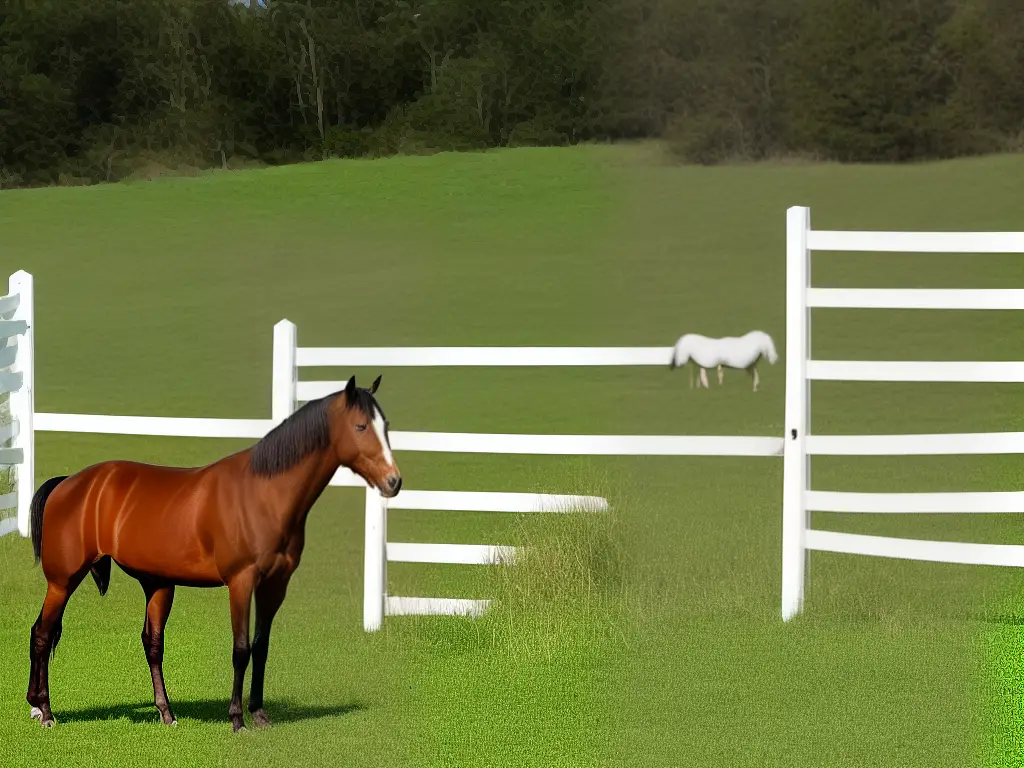
Training Techniques
When it comes to training a Kentucky Saddler horse, understanding and working with their natural gait is crucial. Known for their unique, smooth four-beat gait, called the ‘running walk,’ these horses offer comfort to both themselves and their rider. To enhance this gait, start by observing your horse’s movement in a round pen without a rider, permitting it to move freely while maintaining a steady rhythm. Focus on encouraging your horse to engage its hindquarters and lift its back, which will result in a more comfortable and efficient gait that both you and your Kentucky Saddler can enjoy.
Building a strong foundation in groundwork is essential in training a Kentucky Saddler horse. This includes teaching the horse to yield to pressure and respond to basic cues such as stopping, backing up, and moving in specific directions. Practicing groundwork exercises, such as lunging or round pen work, can help to establish clear communication and trust between the horse and handler. Utilizing positive reinforcement techniques when the horse responds correctly, and avoiding harsh or forceful methods, is crucial for building a strong partnership that will carry over to under-saddle work.
Another key aspect of training a Kentucky Saddler horse is the development of balance and collection. This involves teaching the horse to use their body in a way that is efficient and safe, enabling them to perform at their best under saddle. Prolonged flexion and extension exercises, such as bending and reaching, can help to increase the flexibility and strength of the horse, while encouraging them to engage their core. Incorporating hill work, or riding on varied terrains, can also improve the horse’s balance and musculature, further enhancing their natural gait.
Transitioning from groundwork to riding under saddle is a pivotal stage in training a Kentucky Saddler horse. Careful consideration should be given to selecting the appropriate saddle and tack that will allow the horse to move freely and comfortably. The rider should also take time to learn and become familiar with the horse’s unique gait, adjusting their riding techniques to enhance the movement. Patience and consistency are key factors in successfully transitioning from ground training to riding under saddle.
In order to build a well-rounded and confident Kentucky Saddler horse, it’s important to introduce a variety of training exercises within both arena and trail riding sessions. This keeps the horse engaged and challenged, ultimately creating a strong partnership. Incorporating cavaletti or pole work, practicing lateral movements, and adding obstacles can greatly improve the horse’s balance, coordination, and responsiveness to both rider and environmental cues. A consistent training schedule that includes periods of rest and relaxation will ensure the Kentucky Saddler remains happy, healthy, and motivated to perform at its best.
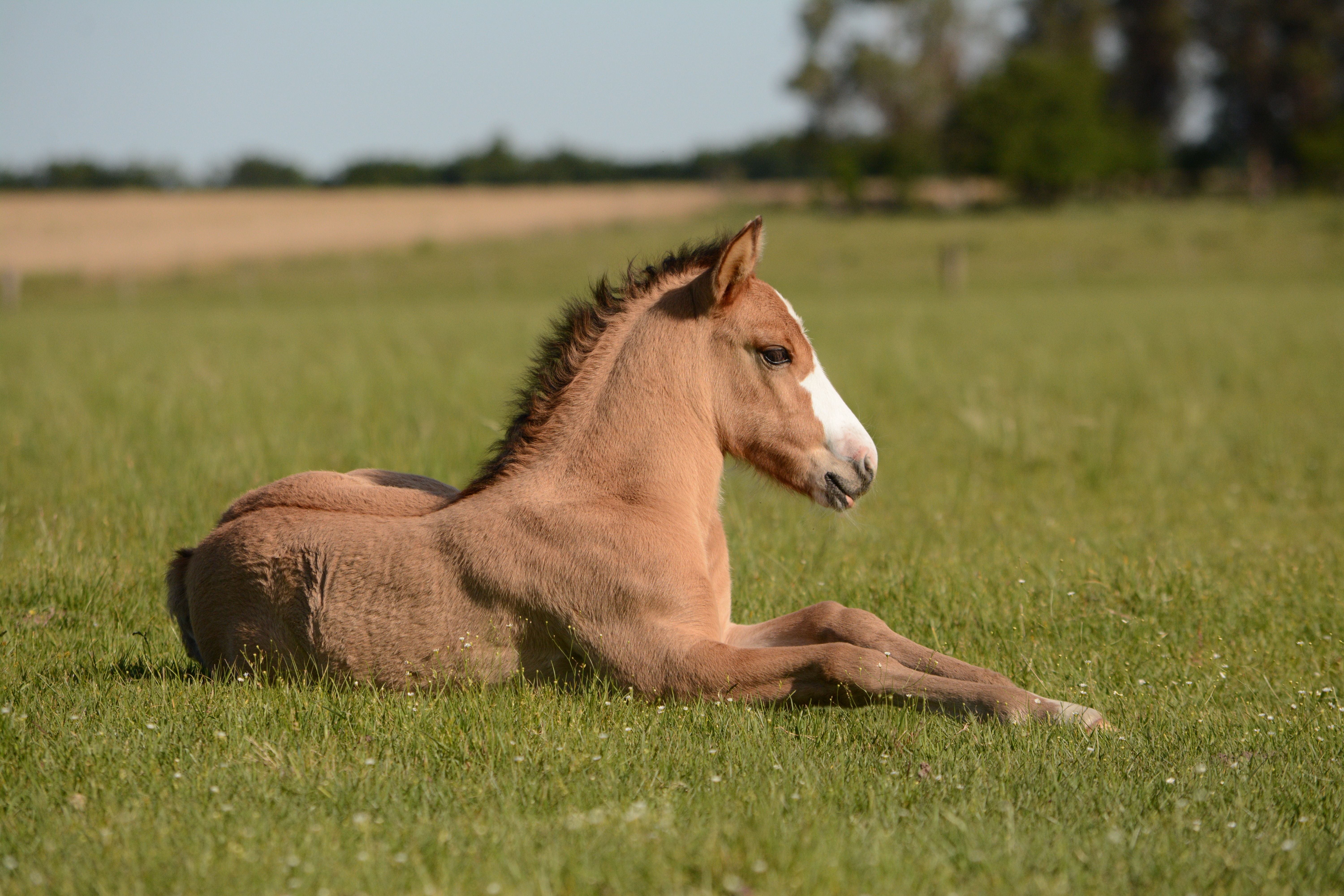
Photo by sool_lorieto on Unsplash
Equipment and Tack
For enthusiasts and hobbyists looking to become skilled with Kentucky Saddler horses, it’s crucial to understand the specific equipment and tack used for these horses, as this knowledge can greatly affect their performance and overall health. By mastering the use of specialized equipment, you’ll be better equipped to not only train, but also create a harmonious relationship with your Kentucky Saddler horse.
One of the primary pieces of equipment used for Kentucky Saddlers is the saddle. The saddle is designed to provide support and stability to both the rider and the horse. There are two main types of saddles: the traditional English saddle and the Western saddle. Though either type of saddle can be used for this breed, the choice depends on the specific discipline, as well as the personal preference of the rider. It is crucial to ensure a proper fit for both horse and rider to avoid discomfort or injury.
Another vital piece of tack for Kentucky Saddler horses is the bridle, which consists of a headstall and a bit. The headstall is positioned on the horse’s head to hold the bit in place, enabling the rider to control the horse’s movements effectively. The bit plays a crucial role because it acts as a mode of communication between the rider and the horse. There are various types of bits, such as snaffle and curb, that cater to different levels of experience and training for both horse and rider. It is essential to choose a suitable bit in accordance with the horse’s temperament and the riding discipline to ensure effective communication.
In addition to saddles and bridles, there are several other accessories used in conjunction with Kentucky Saddler horses. One such accessory is the breast collar, which is utilized to keep the saddle in place and prevent it from sliding back, especially during rigorous activities such as trail riding or jumping. Another supportive accessory is the crupper, which is attached to the rear of the saddle and loops under the horse’s tail to ensure the saddle remains securely in position.
Horse boots or leg wraps are also commonly used with Kentucky Saddler horses to protect the horse’s legs from injuries arising from impact or strain during various activities. There are different types of horse boots available, including splint boots, fetlock boots, and bell boots, each catering to distinct parts of the horse’s legs. It is essential to choose the right type of boot based on the specific activity and the horse’s individual needs.
As an enthusiast or hobbyist looking to become skilled in Kentucky Saddler horses, it is essential to prioritize proper care and maintenance of the equipment and tack used for these horses. Regular cleaning and inspection of the equipment will ensure the tack remains in good condition, preventing any discomfort or harm to the horse. By familiarizing oneself with the purpose of each piece of equipment and how it contributes to the overall performance of a Kentucky Saddler horse, enthusiasts can enjoy a safe and rewarding riding experience for both horse and rider.
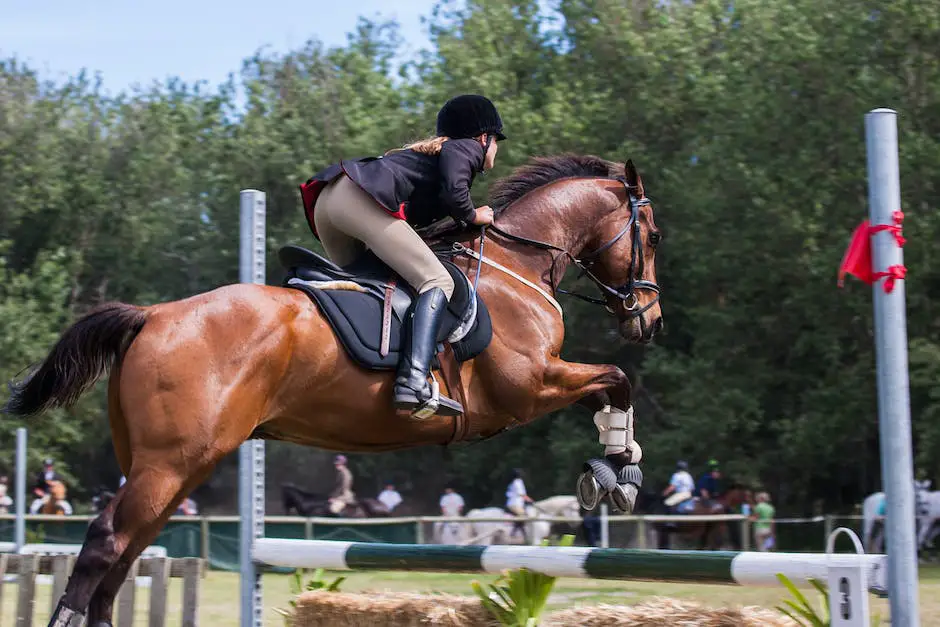
Disciplines and Activities
Known for their versatility and ability to excel in various equestrian disciplines, sports, and activities, the Kentucky Saddler horses, also referred to as American Saddlebreds, are popular among equestrian enthusiasts. By focusing on proper care and equipment maintenance, you can ensure a smooth and enjoyable experience while exploring the world of Kentucky Saddler horses.
One of the most popular disciplines for this breed is saddle seat riding, a style that showcases the horse’s high-stepping, flashy gaits. In saddle seat competitions, Kentucky Saddlers often participate in classes such as three-gaited, five-gaited, pleasure, park, and equitation divisions. These competitions can be found at various horse shows and events across the United States, where the American Saddlebred is a crowd favorite.
Another discipline in which Kentucky Saddlers excel is in driving, which refers to the horse pulling a carriage or cart. They have a long history of being used as stylish carriage horses, thanks to their natural high head carriage and impressive trots. Today, you can find Kentucky Saddler horses competing in pleasure driving, combined driving, and fine harness classes. Additionally, their willingness to please and trainable nature makes them suitable for many amateur drivers and junior exhibitors.
Kentucky Saddler horses are also successful in other performance disciplines, such as dressage and eventing. While not as common in these arenas as some other breeds, their athleticism and ability to learn quickly allows them to perform well in dressage tests and tackling cross country and show jumping courses. This breed’s versatility also extends to the western riding disciplines, such as western pleasure and trail classes, where their smooth gaits and agreeable disposition make them a pleasure to ride.
For those looking for recreational uses, the Kentucky Saddler horse is a fantastic choice. Their comfortable gaits make them excellent trail riding companions, and their social nature makes them suitable for group rides and horse clubs. Additionally, their trainability allows them to participate in activities such as therapeutic riding programs and breed demonstrations at equine expos and events.
The Kentucky Saddler horse, also known as the American Saddlebred, is a highly versatile horse breed renowned for its smooth gaits, elegance, and athleticism. In addition to their performance abilities, the Kentucky Saddler horse has become increasingly popular in the world of breeding and horse showing. Breeding shows and futurities are held to promote the breed and showcase the quality of offspring produced by top stallions and mares.
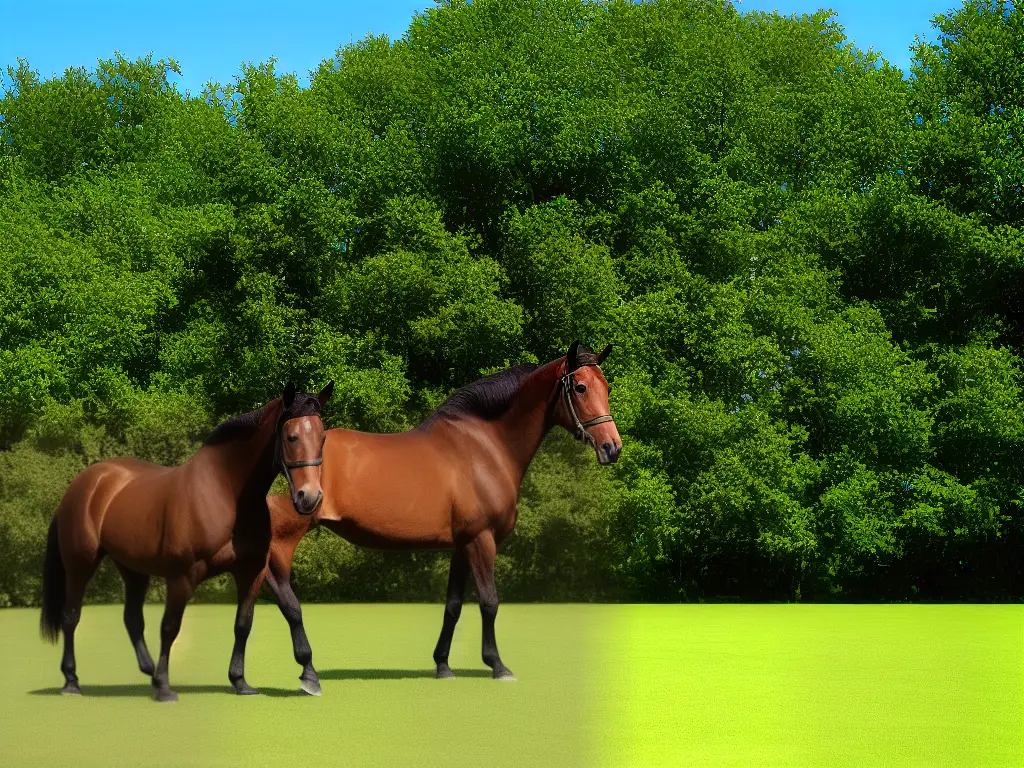
Breeding and Genetics
The American Saddlebred Horse Association and United States Equestrian Federation offer various programs and awards to recognize the achievements of these showy and versatile horses, further promoting the growth and development of the Kentucky Saddler as a breed. One of the key motivations behind breeding Kentucky Saddler horses is to maintain and improve their characteristic traits, such as their elegant conformation and their smooth, easy-to-ride gaits. Equine genetics plays a crucial role in the breeding of Kentucky Saddler horses, ensuring the preservation and enhancement of their unique qualities.
Understanding Horse Breeding and Genetics
Horse enthusiasts interested in breeding and genetics will find the Kentucky Saddler horse particularly fascinating, as breeders strive to nurture and perfect the distinctive qualities of this breed.
A quality breeding program will focus on enhancing not only the physical attributes of the breed but also ensuring that resulting offspring possess a sound temperament and an instinctive willingness to work with their human handler.
A proper understanding of equine genetics is essential in making informed decisions that influence the quality and temperament of the resulting foal.
The Role of Equine Genetics in Breeding
The most notable genetic aspect of the Kentucky Saddler is the range of color genes that influence the coat colors seen in the breed, such as chestnut, bay, black, and various shades of pinto.
The American Saddlebred Registry (ASR) maintains detailed records of pedigrees, foal registrations, and other pertinent data related to this iconic breed.
A focus on careful breeding and responsible genetic selection has ensured the continued success of the Kentucky Saddler horse as a breed admired for its grace, beauty, and versatile performance capabilities.
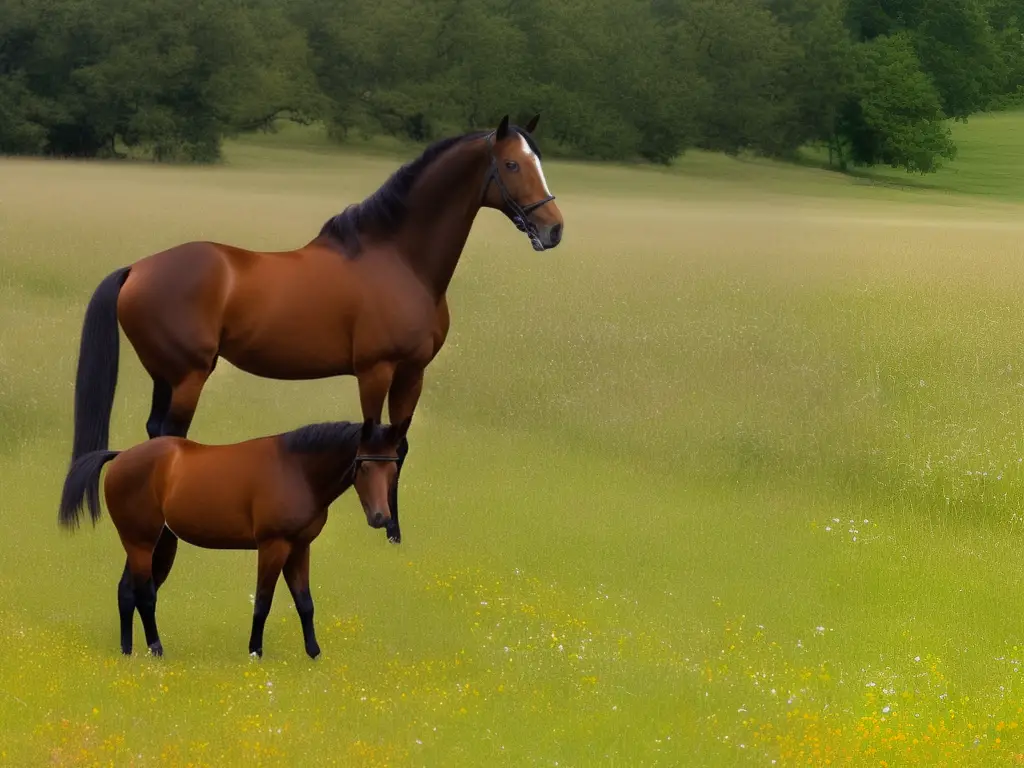
Through the comprehensive exploration of the history, characteristics, and versatility of the Kentucky Saddler horse, it becomes clear why this magnificent breed has earned a steadfast following among equestrians and equine enthusiasts. With its fascinating background, distinctive gaits, and exceptional temperament, the Kentucky Saddler continues to prove itself as a highly adaptable and impressive breed fit for various disciplines and activities. As we continue to appreciate their contributions to the equestrian world, may we strive to further our knowledge and understanding of this remarkable equine companion, ensuring a bright and thriving future for the Kentucky Saddler horse and its admirers.
